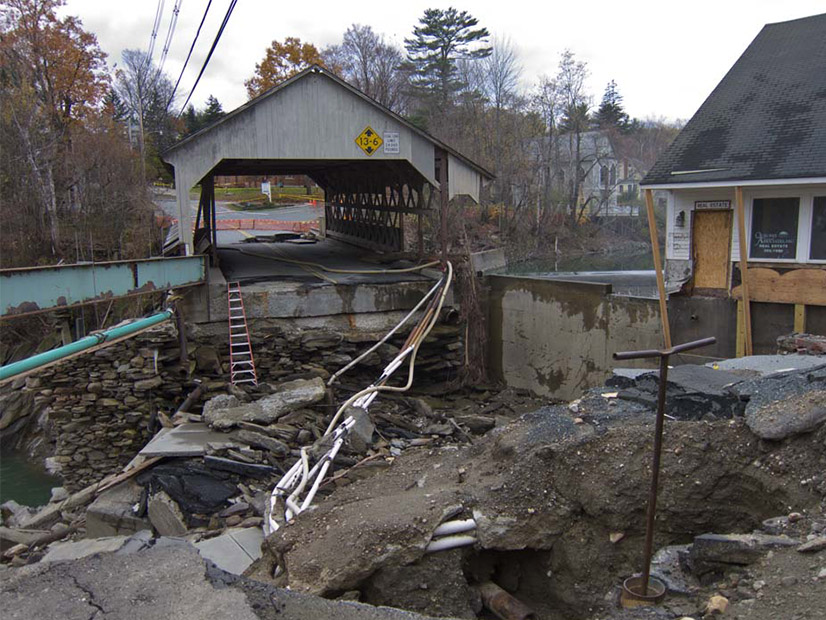
As the Vermont Climate Council (VCC) works under an aggressive legislative timeline to deliver a state climate action plan in December, one equity expert says the council needs to “slow down.”
The urgency with which the council is working, “even in the context of the climate crisis, and even when we know we need to get somewhere fast, can be very detrimental in the long run,” Amy Laura Cahn, acting director of Vermont Law School’s Environmental Justice Clinic, said at the VCC’s meeting Monday.
If the council can find a compromise solution around slowing down, even if just for six months, she said “the willingness to do that demonstrates the commitment to partnership and relationship.”
The council has been struggling to balance the urgent call for climate action with the need for a much slower process of building relationships with vulnerable communities. (See VT Climate Council Might Delay Release of Action Plan.)
Vermont’s 2020 Global Warming Solutions Act directs the council to adopt a climate plan that benefits residents equitably and ensures mitigation strategies consider disproportionate impacts of climate change on marginalized communities. The council’s Just Transitions Subcommittee is charged with identifying how the plan will meet that mandate, and it recently released a draft set of equity and justice definitions and guiding principles.
Cahn spoke to the council about taking lessons from contemporary climate and energy policies that demonstrate both beneficial and harmful approaches to policymaking.
Among the positive examples of climate policies today, she said, there are few that have made the most affected communities equal partners in decision-making.
“I think there are some lessons learned from the climate space of what’s happened to date and how we have fallen short,” she said. “And we’ve fallen short, both internal to policymaking within government … and as environmental movements.”
Cahn cited the Regional Greenhouse Gas Initiative (RGGI) and the Transportation and Climate Initiative Program (TCI-P) as examples of climate policy design that addresses climate “in the aggregate” and assumes the benefits will trickle down.
Policies that raise resources must specify that the resources go to the people of color communities that are harmed disproportionately by siting of emitting facilities and transportation corridors, according to Cahn.
“We know that RGGI has worked in terms of ratcheting down the emissions; we know that it has generated resources; and we also know that those resources have not gone to the communities most in need of support,” she said.
In Massachusetts, she added, RGGI resources that fund the state’s energy efficiency programs more often go to wealthy, white communities.
RGGI’s most recent report covering program investments for 2019 shows 16% of overall investments target low-income communities. The report, however, does not demonstrate whether any investments are dedicated to historically marginalized communities.
The early phase of TCI-P development, according to Cahn, did not engage environmental justice groups, but as the program continues to move toward implementation, that’s beginning to change.
“Very late in the game, the communities most impacted by transportation emissions were suddenly finding themselves … raising a whole set of concerns that were ignored for years,” she said. Those concerns included how the program will ensure that benefits go to communities overburdened by GHG co-pollutants and how it will mitigate negative effects of increased electrification on environmental justice communities.
The TCI-P memorandum of understanding signed by three states and D.C., however, shows movement toward equity language that was not in the original program documents.
“There’s definitely a shift in the engagement,” Cahn said. “There is starting to be some traction from the environmental movement saying, ‘We need to take a beat; we need to listen; and we need to understand what the concerns are, so that we can create something that’s actually responsive to the communities that need it most.’”
Vermont can learn from RGGI and TCI-P as it prepares recommendations for reducing emissions and mitigating climate change in the state.
“You’re at the beginning of your process, and you have the opportunity to … create something that is potentially transformative,” Cahn said.
Guiding Principles
The design of the council’s draft Guiding Principles for a Just Transition is intended create an equity lens for developing the climate plan’s strategies.
It places equity in distributive, procedural, contextual and corrective pillars, and it aligns justice across environmental, climate and energy segments. The environmental justice segment includes redressing systems of oppression and harm done to people of color communities.
Council members, through four subcommittees, are currently building their recommendations for the draft climate plan; equity and justice concepts, together with a set of guiding principles, must inform that work now.
The principles call for the council, in building out investment and implementation plans, to acknowledge inequity and racism and remedy historical environmental injustices. A set of self-assessment questions and a grading system accompany the principles to help subcommittees determine whether their recommendations are just and equitable in the lead up to the initial plan compilation this summer.
While council members begin to the apply the draft guiding principles to their work in the coming months, they will provide feedback on the document to the Just Transitions Subcommittee. The council also plans to contract a specialist to support committee members in grading their recommendations before finalizing the climate plan in the fall.

